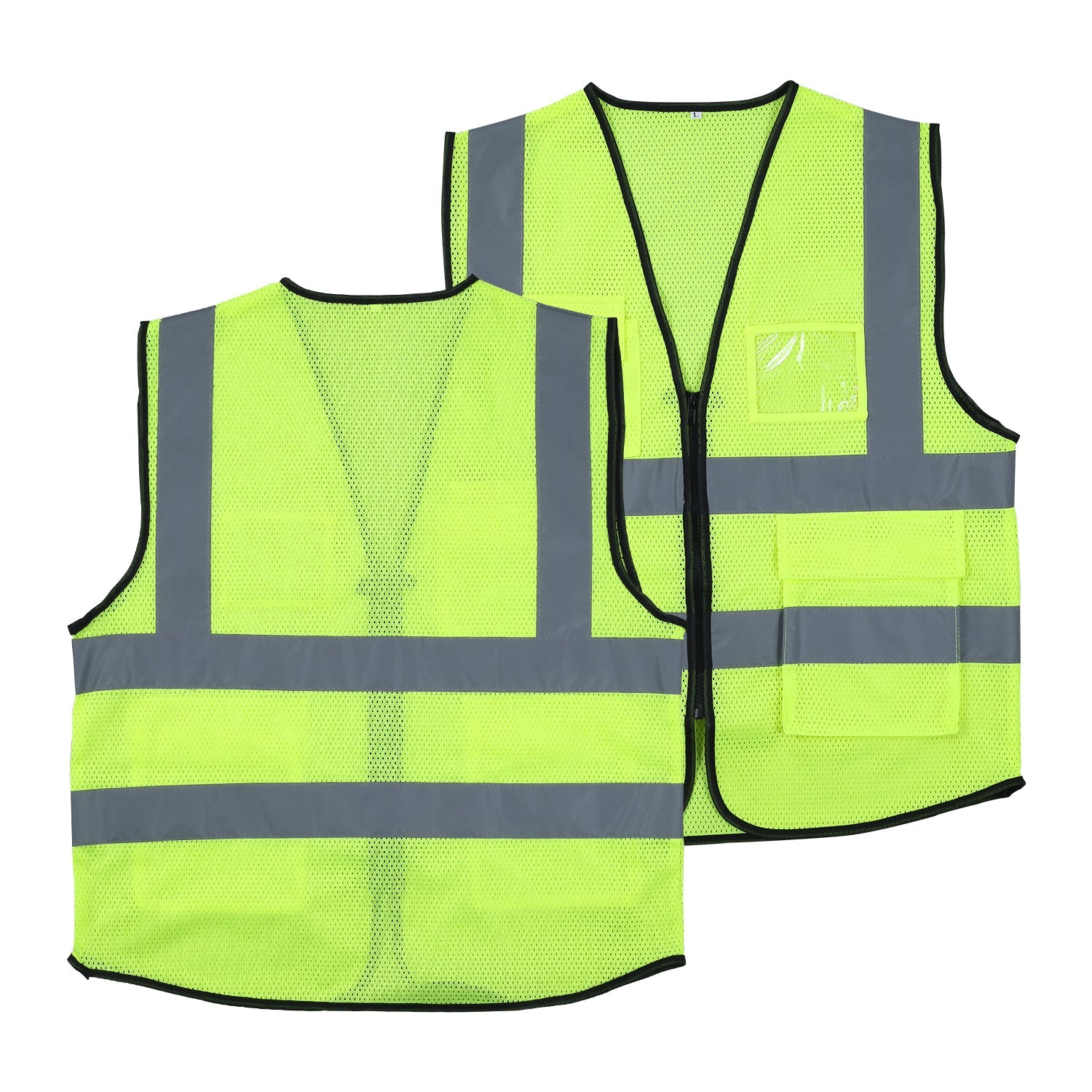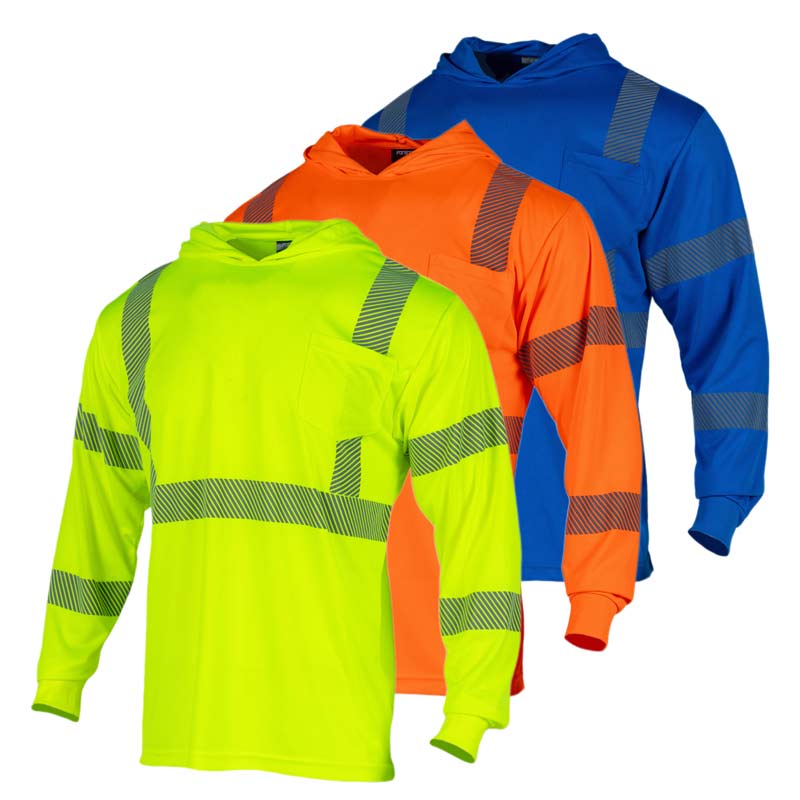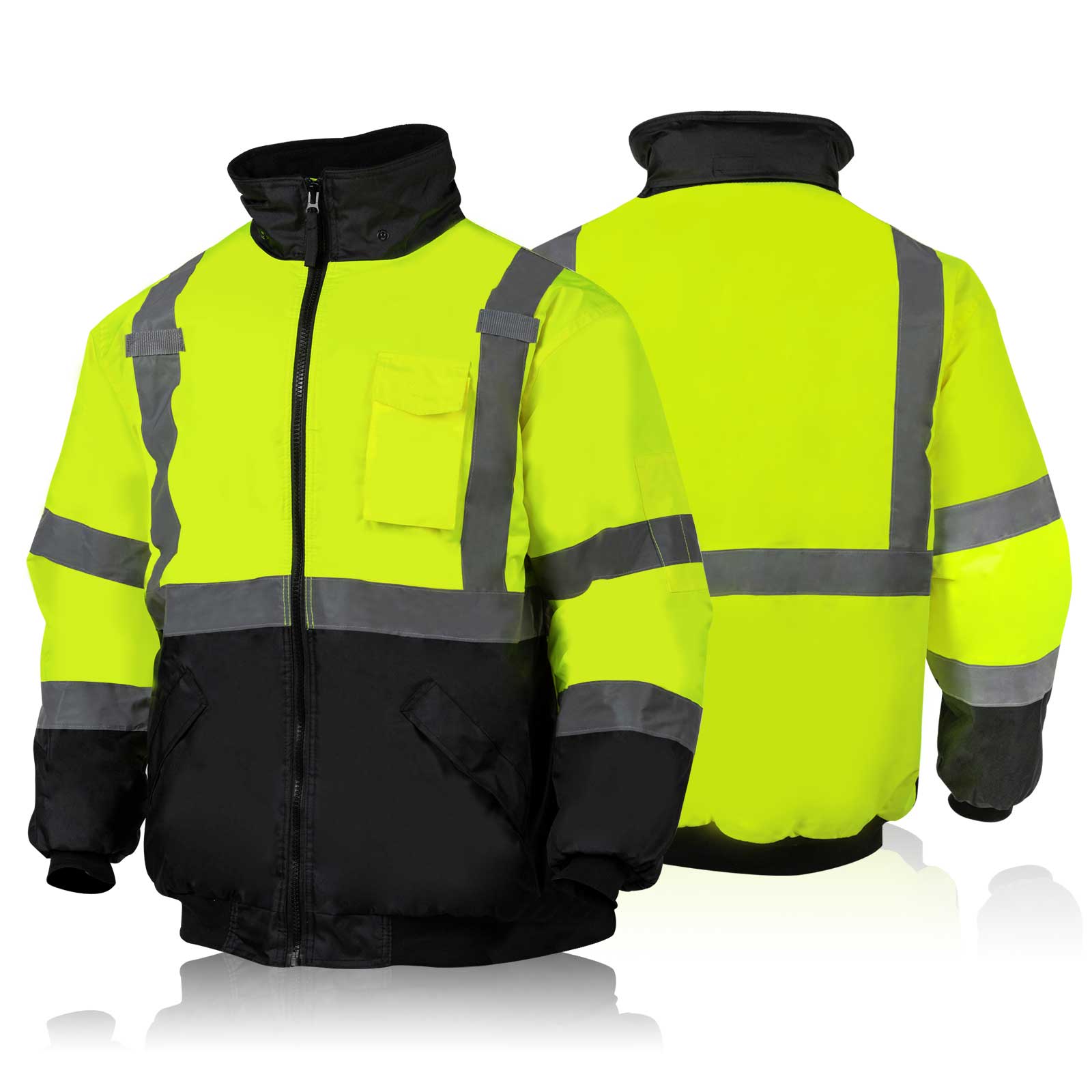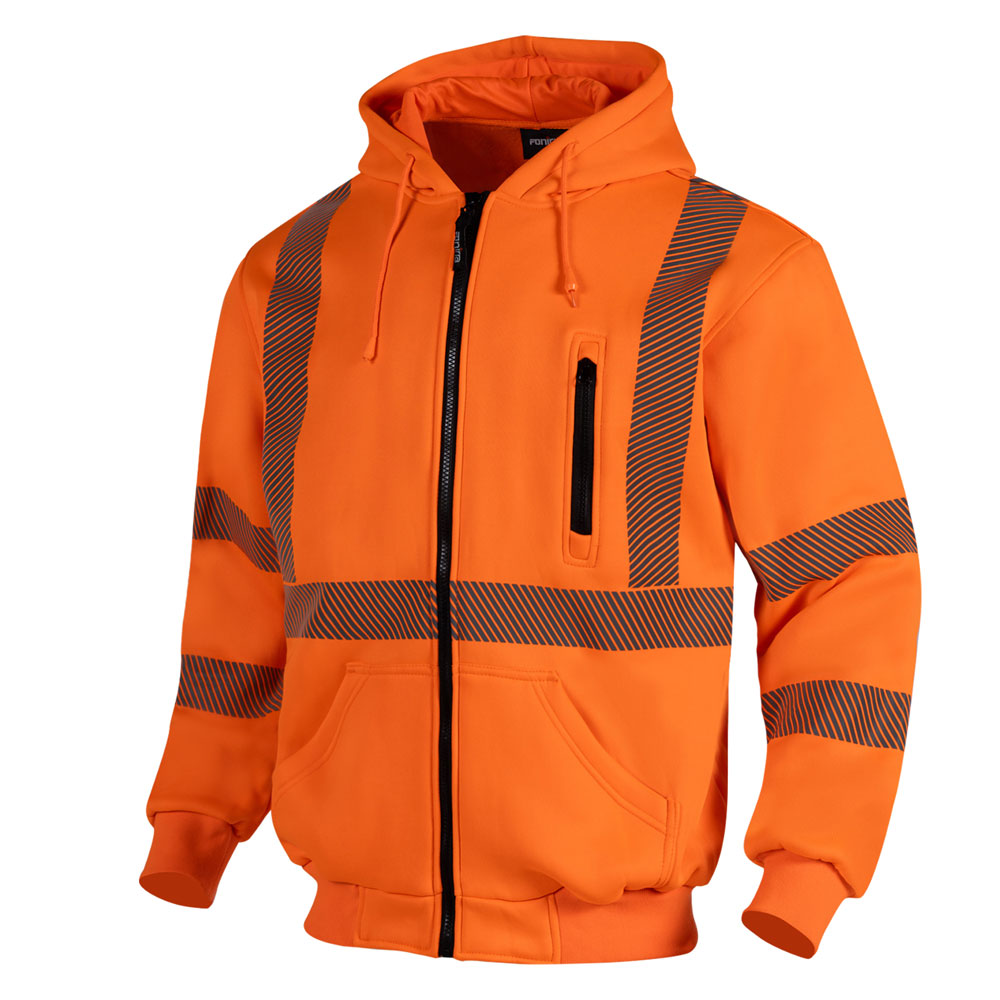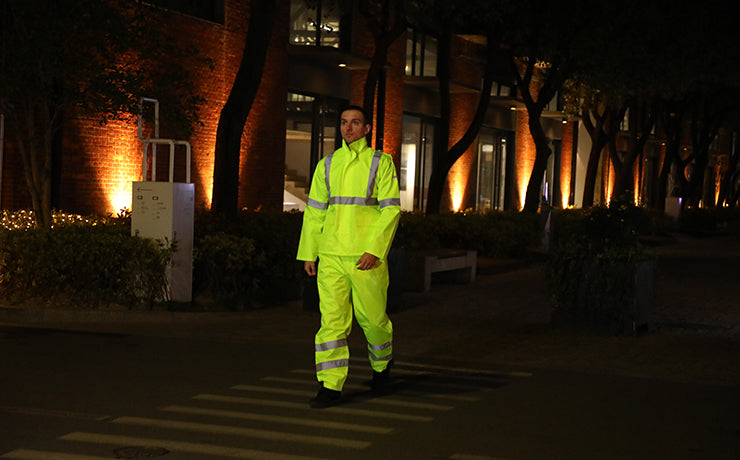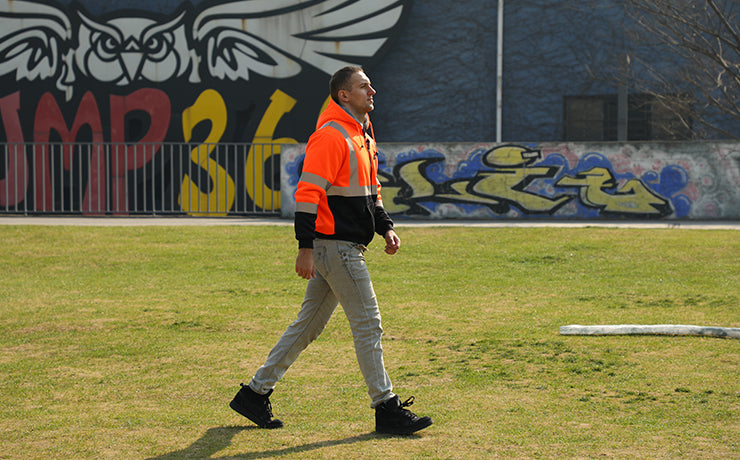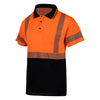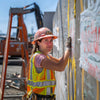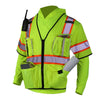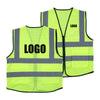How to Choose a Hi-Vis Jacket That Will Last Whole Winter?
As winter sets in, ensuring safety on the job becomes paramount, especially for those working around construction equipment and in outdoor environments.
Choosing the right high-visibility clothing is crucial to staying warm, visible, and protected amidst the snow and low light conditions.
In this article, we'll delve into how you can select a high-visibility jacket that not only withstands the winter chill but also enhances a person's visibility and safety.
Factors to Consider When Selecting a Hi-Vis Winter Jacket
Before you decide which Hi Vis winder jacket you should choose, here are some factors that you should consider:
1. Warmth
Staying warm is about more than just the outer layer. Effective insulation and strategic layering are key to combatting the cold. High visibility apparel like hi-vis winter jackets must have sufficient insulation to trap heat.
Materials like down and synthetic fibres are common in hi-vis clothing. Down provides excellent warmth but can be less effective when wet. Synthetic fibres, on the other hand, offer warmth even in damp conditions and are often found in high-visibility shirts and jackets.
2. Visibility
High-visibility materials come in several colours. Fluorescent yellow-green, for example, is highly visible in daylight, while orange stands out against non-complex work environments.
Reflective stripes, made from retro-reflective material, enhance visibility in low light conditions by reflecting light back towards its source, making them ideal for construction workers working amidst construction equipment.
3. Durability
The longevity of high-visibility vests and jackets depends on durable materials and strong construction. High-visibility clothing meant for winter should be resilient enough to withstand the wear and tear associated with interacting with construction equipment and harsh weather.
Materials in Hi-Vis Winter Jackets
What is a Hi-Vis winter jacket made of? Here are all the materials used in its production:
1. Polyester
Polyester is a synthetic fabric known for its durability and resistance to wrinkles and shrinking. It retains colour well, ensuring long-lasting visibility. While not as warm as other materials, it is often used in combination with insulating fabrics for added warmth.
2. Nylon
Nylon is lightweight, strong, and resistant to abrasion. Often used as an outer shell, it can be treated for high visibility and is effective in protecting against wind and moisture, thereby aiding in warmth retention.
3. Down
Down is a natural insulator using the soft plumage of ducks or geese. Known for providing excellent warmth, down may need to be paired with high-visibility outer layers as its natural colour doesn't enhance visibility.
4. Fleece
Fleece is a synthetic material known for its warmth and softness. While it provides excellent insulation, it may need to be combined with a high-visibility outer layer for optimal visibility.
5. Spandex
Spandex is known for its exceptional elasticity. While not typically used as the primary material, it may be integrated for flexibility and comfort. For visibility and warmth, it is usually combined with other materials.
6. Reflective Tape
Reflective tape is made from materials that reflect light back towards its source. Vital for visibility in low light conditions, it is added to various fabrics to enhance safety without affecting warmth.
7. Polyurethane (PU) Coatings
PU coatings can be applied to fabrics to make them waterproof. These coatings ensure the wearer stays dry, which aids in maintaining warmth. The coatings can be added to high-visibility materials.
Avoiding Common Pitfalls in Choosing Winter Safety Clothing

Here are some common pitfalls that you should be avoiding:
-
Style Over Function: It's tempting to pick high-visibility clothing based solely on style. However, the primary function of hi-vis clothing is safety. For instance, a fashionable high-visibility jacket might lack the reflective tape needed for low-light conditions.
-
Overlooking Fit and Comfort: Comfort is crucial, especially in winter. Ill-fitting high-visibility apparel may restrict movement or fail to provide adequate warmth. Ensure that the hi-vis clothing you choose is comfortable and suits your work environment.
-
Neglecting Safety Standards and Certifications: Hi-vis clothing must comply with safety standards such as those set by the American National Standards Institute (ANSI). ANSI standards categorize high visibility clothing into performance classes based on the background material, retro-reflective material used, and suitability for complex backgrounds.
Determining the Right Level of Visibility
Choosing the right level of visibility in your hi-vis apparel is essential for ensuring safety in various work environments.
Assessing work environment
The lighting conditions of your work environment, whether it's daytime, nighttime, or foggy, significantly influence the kind of high-visibility clothing needed. For instance, fluorescent material is highly effective during the day as it is designed to reflect light in all directions, making it ideal for warehouse workers or those in similar settings.
Meanwhile, for nighttime or off-road environments, retroreflective material becomes crucial as it bounces light back to the source, highlighting the human form even in low-light conditions.
Industry standards for visibility
Different industries have specific standards outlining what constitutes appropriate clothing for visibility. For example, public safety workers may require different features in their hi-vis apparel compared to those commonly worn by construction or warehouse workers. Understanding and adhering to these standards ensures that your clothing is suited to your specific needs.
Impact of Colors and Reflective Stripes on Visibility
The colour and design of high-visibility clothing play a pivotal role in ensuring the wearer is easily seen in diverse environments. Let's delve into how various colours and reflective stripes impact visibility:
1. Fluorescent Yellow-Green

-
Performance: This colour is highly visible during the daytime, especially in natural light.
-
Best For: Construction workers, cyclists, and outdoor workers.
2. Fluorescent Orange-Red

-
Performance: Stands out well against natural backgrounds and is effective under both natural and artificial light.
-
Best For: Road workers, forestry workers, and survey crews.
3. Bright White
-
Performance: Easily noticeable in low light conditions but can blend with snow during winter.
-
Best For: General use but may be less suitable for snowy environments.
4. Fluorescent Pink
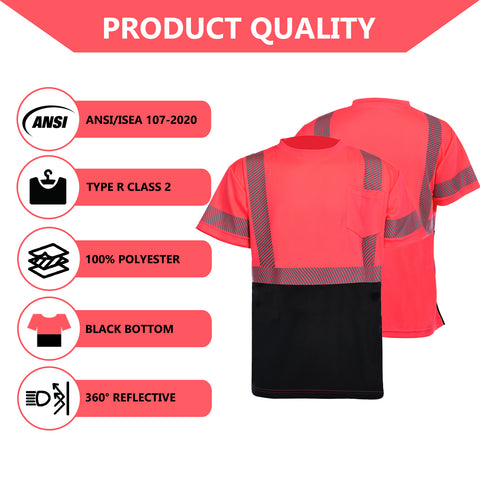
-
Performance: Provides contrast against natural and industrial backgrounds.
-
Best For: Emergency responders and public safety officers.
5. Black or Dark Colors

-
Performance: This can offer a stark contrast for reflective material but may be less visible on its own during nighttime.
-
Best For: Workers in industrial or urban environments with well-lit conditions.
Reflective Stripes vs. Base Color
Reflective stripes are made from retro-reflective materials designed to reflect light back to its source. They are especially effective in low light conditions and at night, increasing a person's visibility significantly.
The base color of the high-visibility apparel ensures visibility during the daytime and provides a background for the reflective stripes to stand out against.
While the base color provides consistent visibility during daylight, reflective stripes are crucial for enhancing visibility in low light or nighttime conditions. Combining a vibrant base color with strategically placed reflective stripes ensures optimal visibility across a range of lighting conditions.
The Importance of Waterproofing
Waterproofing in hi-vis apparel is an often overlooked but vital feature that protects against the harsh winter elements.
-
How waterproofing protects: Waterproof hi-vis apparel prevents water from seeping through the fabric, ensuring that you stay dry even amidst snow or rain. This feature is particularly useful for public safety officers and others who spend long hours outdoors.
-
Maintaining warmth and durability: Waterproofing not only keeps you dry but also aids in maintaining warmth, as wet clothing can lead to rapid heat loss. The durability of your hi-vis clothing is also extended when it is protected from constant exposure to moisture.
Conclusion
Selecting an apt hi-vis winter jacket is crucial for ensuring safety and comfort in colder months. A prime example is the Fonirra SW01B High Visibility Safety Sweatshirt & Hoodie, designed to cater to diverse needs.
It not only complies with ANSI Class 3 standards but also provides warmth and visibility with its reflective tape and contrasting orange stripe. Investing in such well-rounded safety gear is a step towards a secure and productive work experience.

